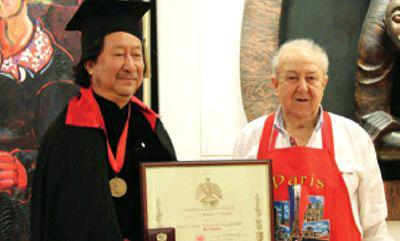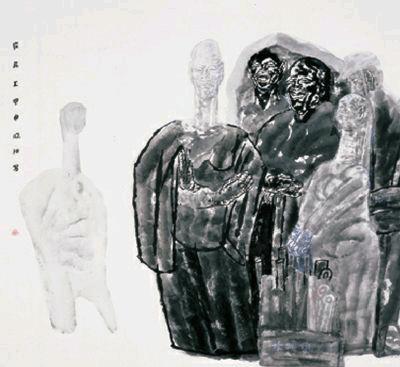Influence Through Introspection
2014-09-16
Beijing Review: Could you tell us about your experience during your recent trip abroad? yang Xiaoyang: We held exhibitions of traditional Chinese paintings in seven countries around the world. Our exhibitions at the UN headquarters in New york City, the Chinese Consulate General in New york, and the U.S. Congress in Washington, D.C. were highly rated. Russia was the last stop on our round-the-world tour. Our exhibition in Russia, thanks to the effective pre-opening promotion and the unique form of the exhibition itself, was a success, and the local audience showed great interest in the same way people in France, Greece, Germany,and Southeast Asian countries did.
I believe the reason for this success is that a delegation of artists followed the exhibitions to each country and were in communication with local artists, so that in-depth discussions on the artworks, artistic theories and techniques as well as cultures were able to be held. Over the past few years, many exhibitions representing Chinese culture have been held overseas. When we had exchange activities like exhibitions and seminars before, however, we mainly concentrated on how Chinese artists could learn from our Westerner counterparts instead of exploring norms and innovation in our own art.
Does that mean Chinese art is gaining a voice in the world?
To be honest, over the past five years, I have noticed the foreign attention focused on Chinese art is beyond what weve ever had before. The underlying reason for this attention lies in the national prosperity of China and its increasing influence in the world. People outside the country have begun to recognize China and its culture. Now they would like to sit down and lis- ten to what we have to say. Through this kind of dialogue, Westerners can gain a comprehensive and in-depth understanding of Chinese art and aesthetics.

Currently, many Western artists admire their Chinese peers for their traditional artistic techniques. Seeing the works of Chinese artists, some have said theyre beginning to understand why Western artists, like Pablo Picasso, would want to create such a highly stylized genre, and they start to understand Picassos world through Chinese art. There is much evidence to show that almost every Western master was once influenced by Eastern art, which they might also get through Japan or the Republic of Korea. But this Eastern culture is rooted deeply in China—the same way Western art is in Greece.endprint
What do you think about the influence of Western art in China?
For the past 100-plus years, Chinese art has followed the footprints of Western art, which has changed our artistic conceptions and techniques. At the same time, it has helped the aesthetic demands of Chinese people evolve. But this is not to overlook the fact that national traditions, especially our traditional artistic spirit, have been ignored. We have kept some traditional techniques, but the study of Chinese art is far from sufficient. Although weve noticed this issue, it cannot be changed in one day.
For years we have been learning from the West and many of our artists started their journeys learning from Western art. The works they produce now turn out to be a combination of the West and the East, or even Westernoriented. This kind of imbalance is hard to change. However, we need to enhance our artistic awareness and national confidence, both of which can be achieved through the efforts of artists, through government assistance, and more importantly, through education that focuses on traditional culture.
Could you give us a brief introduction to the China National Academy of Painting?
It took us five years to re-organize an art research institute that focused solely on traditional Chinese painting into the China National Academy of Painting, extending it into the fields of calligraphy, oil painting, printmaking, sculpture, art appreciation and public art exhibits. Eight institutes were established to support development in those fields, in addition to a youth academy for young artists. Meanwhile, five research centers specializing in art education, the art industry, information, communication and modern art are collaborating with those eight institutes in order to pick up any slack and make their work more accessible to society. We also work with domestic and overseas organizations to set up institutions both at home and abroad. The results of our artistic mission will be spread through those institutions, and thus have a greater impact on society.endprint
